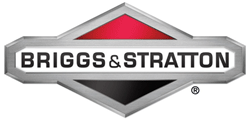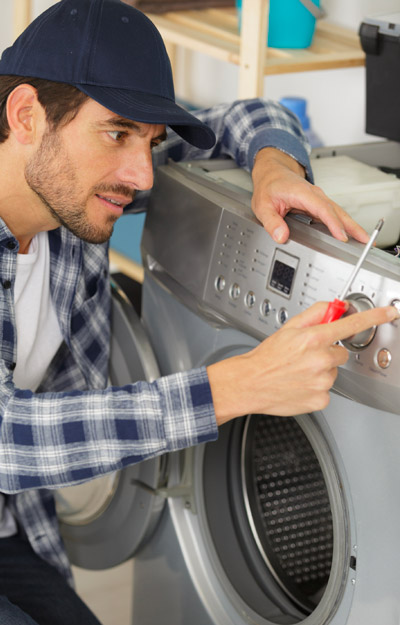Make sure you haven't got the discount earlier.
Appliance Parts
- Accessories
- Dishwasher
- Dryer
- Stove / Oven
- Microwave
- Refrigerator
- Washer
- See more... See less...
Lawn Equipment Parts
- Lawn Mower
- Chainsaw
- Blower
- Generator
- Air Compressor
- Lawn Tractor
- Pressure Washer
- See more... See less...
Major Appliances, Major History - The Refrigerator & Freezer
Major appliances can be described as machines that accomplish daily household or commercial and institutional functions such as food preservation, cooking, and so on. Unlike small appliances, major appliances are somewhat difficult to move so they are usually fixed in a particular location. Another feature of major appliances is that they consume more electricity than other electric equipment.
History of Refrigerator
A refrigerator with or without a freezer is a major appliance designed for cooling and preserving foods. One of the essential advancements toward the invention of the refrigerator came when the refrigerated coil was invented by Ibn Sina in the 11th century. The refrigerated coil was used to condense vapors. William Cullen at the University of Glasgow demonstrated the first artificial refrigeration system in the year 1748. However, he never used his discovery for practical purposes. In the year 1805, US inventor Oliver Evans, designed the first refrigeration machine that didn’t use liquid and instead used vapor to cool. In 1834, Jacob Parkins built the first machine for practical refrigeration. US physician John Gorrie built a refrigerator in 1844 based on the design of Oliver Evans to produce ice for cooling the air for yellow fever patients.
The first ice making machine used for practical food purposes such as meat packing and brewing was invented by James Harrison in 1857. This same concept was made more complex in 1859 by Ferdinand Carre in 1859. This newly developed system didn’t use compressed air to cool, but instead used ammonia. Later, in 1876, Carl von Linden, a German engineer, established the process of liquefying gas which is a crucial aspect of refrigeration technology. The first widely used refrigeration system was released by General Electric in 1927. Beginning in the 1920s Freon was used and marketed as a lower toxicity alternative to the substances used in previous refrigeration units.
Ice Box: The Refrigerator
Before refrigeration systems were invented, people used to cool food by means of snow and ice either brought from the mountains or found locally. The first known ice cellars were made by digging holes in the ground, built with straw and wood, and filled by ice and snow. In that period, refrigeration was done by a handmade machine known as an “ice box”. A wooden box was lined with zinc and insulating materials. The ice box was smaller and less efficient than today’s refrigerators but it’s regarded as the ancestor of the modern refrigerator. The ice needed for the ice box was delivered by the ice man during the 19th and 20th centuries. Families used to buy the ice to fit the ice box. The ice would generally last a week.
How the Freezer Works
Refrigeration is the mechanical process to remove heat from an enclosed space to lower its temperature. The machine uses liquid evaporation for absorbing heat. The liquid known as the refrigerant evaporates at exceptionally low temperatures, producing a freezing temperature inside the machine. The physical concept is that a liquid can be vaporized quickly by compression. The expanding vapor needs kinetic energy which it absorbs from the nearby area. As a result, it loses energy and instantly gets cooler. Cooling by quick gas expansion is the basis of modern refrigeration.
Modern Refrigerator
A modern refrigerator maintains a temperature of a few degrees above the freezing point of water. The refrigerator that maintains a lower temperature (below water freezing point) is called a freezer. Refrigerators have replaced the ice box, occupying a very important place in kitchens as well as offices and pharmacies.
Modern domestic refrigerators and freezers for the purpose of food preservation are built in a variety of sizes. The smallest is the 4 L Peltier refrigerator which is able to hold around 6 cans of beer. Large refrigerators which are found in most homes in American can stand as tall as a man and are approximately 1 meter wide with a 600 L capacity. Refrigerators may be combined with freezers which may be positioned above, below, or adjacent to the refrigerator. Some freezers have drawers for storing food whereas others are without divisions. There are also luxury refrigerators which can be fully customized to fit all your needs. The luxury refrigerators are very handsome and manufactured to the highest standards with the best quality materials and design. Irrespective of the size and design, the purpose remains the same: to store and preserve food stuff and other items.
Check out these links to find out more about the history of the refrigerator/freezer.
- Brief History of Refrigeration
- Refrigeration History
- The History of Refrigeration
- The Refrigerator
- Picture of GE’s First All Steel Refrigerator
- Search your model number to find:
- Genuine OEM parts guaranteed to fit
- Free manuals and guides
- Repair instructions and videos


































